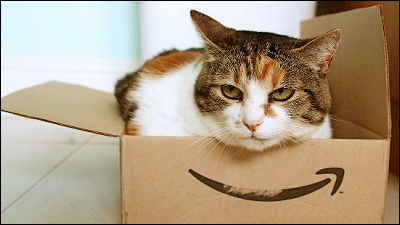A quarter of the vacuum cleaners sold on Amazon raised the list price before the sale, and in some cases it was higher than before the discount

When you see big discounts from regular prices in limited-time sales and promotions, you can't help but get the impression that you're getting a good deal. Using this psychology, research results have been reported that Amazon is rampant in the way of discounting after raising the list price.
Frontiers: Framing Price Increase as Discount: A New Manipulation of Reference Price | Marketing Science
Score a discount on Amazon? You might've unwittingly paid more
https://phys.org/news/2022-10-score-discount-amazon-mightve-unwittingly.html
The research team of Jinhong Xie et al. of the University of Florida made the raised price the fixed price and then discounted it to make it look as if it were much cheaper than before `` price-increase and list-price synchronization: PILPS)”, we conducted a study to track multiple product categories sold on Amazon for 13 months and collect about 500,000 price data.
As a result, many of the approximately 1,700 models of vacuum cleaners sold on Amazon have PILPS, and although most of them had no price changes or had price cuts, 22% were higher than before the change. I understand. As a result, the vacuum cleaner was sold at an average price of 23% higher, and a few days later the list price was lowered again and the discount ended.

PILPS was also used in 13% of digital cameras, mixers, and drones, and 3% of books, although less frequently than vacuum cleaners. It is said that the products that deceived consumers in this way increased sales even though the price was actually higher than before, and the ranking in Amazon's sales ranking increased.
Retailers are regulated by laws against unfair pricing, so they can't display list prices that are different from the actual price. However, the current system is only about the legitimacy of the list price, and does not regulate anything about misleading consumers by manipulating the timing of introducing the list price, so the research team says that this is a loophole. points out.
From this result, the research team said in the paper, ``PILPS has been adopted by a wide range of product categories and distributors, and it is possible for distributors to simultaneously achieve improved profit margins and sales volume at the expense of consumers. We found that this technique was most effective and easier to implement for competitive products with positive consumer reviews.'
According to Xie, consumers can protect themselves by being suspicious of discounts advertised when shopping online. In other words, you need to know that just because a discount is claimed doesn't mean it's cheaper. Also, by using a tool that allows you to see price trends, you can also see if the list price is inflated before the discount.
I tried using the browser extension ``Amazon Price Tracker'' that can display price changes of Amazon.co.jp for free & notify price drops - GIGAZINE
“We feel that consumers should be more conscious of protecting themselves,” Xie said. We'll have to decide how to manage it,' he said.
Related Posts:
in Web Service, Posted by log1l_ks






